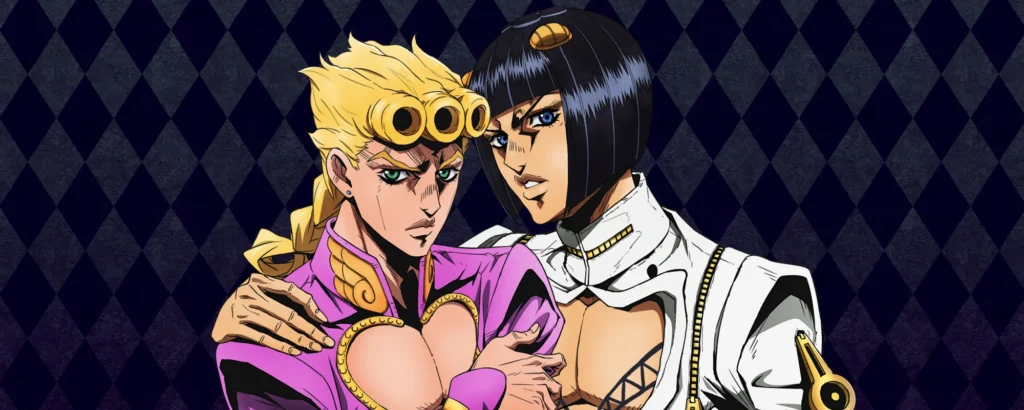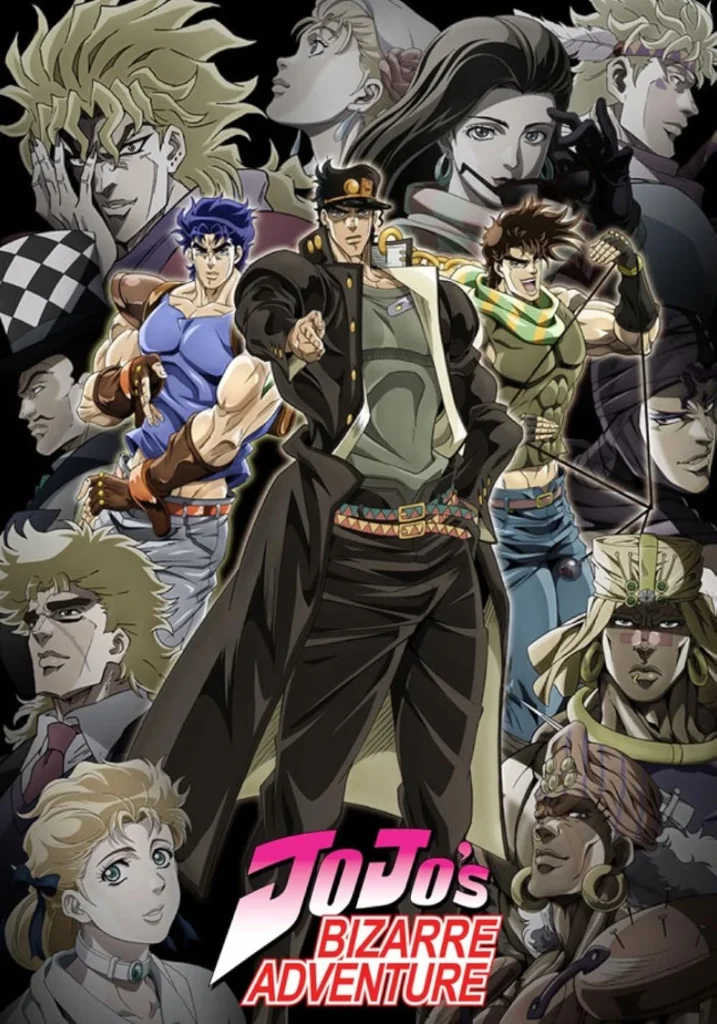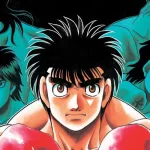“JoJo’s Bizarre Adventure” (Japanese: ジョジョの奇妙な冒険, Hepburn: JoJo no Kimyō na Bōken) is not just another manga series; it is a cultural phenomenon that has captivated audiences for over three decades. Created by the visionary Hirohiko Araki, this manga first made its debut in 1987 and has since become one of the most influential works in the manga and anime world. With its unique art style, imaginative storytelling, and deep cultural references, JoJo’s Bizarre Adventure has cemented itself as a beloved and enduring series that continues to inspire fans around the globe.
The Origins of JoJo’s Bizarre Adventure
The story of JoJo’s Bizarre Adventure began in Shueisha’s Weekly Shōnen Jump, where it was serialized from 1987 to 2004. In 2005, the series transitioned to the monthly seinen magazine, Ultra Jump, reflecting its evolution and growing appeal to a broader demographic. The series is divided into nine distinct story arcs, each featuring a new protagonist who bears the “JoJo” nickname, a tradition that ties the expansive narrative together. With 134 tankōbon volumes published as of April 2024, JoJo’s Bizarre Adventure holds the distinction of being the largest ongoing manga series published by Shueisha in terms of volume count.
Each story arc introduces new characters, settings, and challenges, yet all are connected by the shared bloodline of the Joestar family. This generational storytelling approach allows the series to remain fresh and innovative, with each arc bringing something new to the table while maintaining a coherent narrative.
Art Style and Cultural Impact
One of the most striking aspects of JoJo’s Bizarre Adventure is its distinctive art style. Hirohiko Araki’s illustrations are characterized by their exaggerated features, dynamic poses, and intricate details. The series’ art style has become iconic, with many fans and artists drawing inspiration from Araki’s work. The “JoJo pose” has become a phenomenon in its own right, with people around the world replicating the dramatic and often flamboyant stances featured in the manga.

Beyond its visual appeal, JoJo’s Bizarre Adventure is renowned for its frequent references to Western music, fashion, and culture. Araki has infused the series with a deep appreciation for these influences, naming characters, Stands, and even story arcs after famous musicians, albums, and songs. This blending of Eastern and Western cultural elements has made JoJo’s Bizarre Adventure a unique bridge between different worlds, enriching the narrative and broadening its appeal.
Stands: The Unique Battle Mechanic
At the heart of JoJo’s Bizarre Adventure’s appeal is its unique battle system centered around “Stands.” Stands are psycho-spiritual manifestations of a character’s fighting spirit, each with its own distinct abilities. Unlike traditional power systems in other manga, Stands are highly individualized, allowing for creative and unpredictable battles. This innovation set JoJo’s Bizarre Adventure apart from its peers and has become one of its most defining features.
The concept of Stands was introduced in the third story arc, “Stardust Crusaders,” and has remained a central element of the series ever since. Stands are often named after musical references, further cementing the series’ connection to Western culture. The battles between Stand users are not just physical confrontations but also strategic mind games, where creativity and intelligence often determine the outcome. These memorable Stand battles have left a lasting impact on fans and have become a hallmark of the series.
Anime Adaptations and Expanding the Franchise
JoJo’s Bizarre Adventure’s influence extends far beyond its manga origins, with multiple adaptations in various media. The first major adaptation was a 13-episode original video animation (OVA) series that covered the third part of the manga, “Stardust Crusaders.” Released between 1993 and 2002 by the studio A.P.P.P., this OVA laid the groundwork for future adaptations.

In 2012, David Production took on the task of adapting JoJo’s Bizarre Adventure into a full-fledged TV anime series, starting with the first two parts, “Phantom Blood” and “Battle Tendency.” The studio’s faithful adaptation and dynamic animation brought the series to a new generation of fans, and it has since produced five seasons covering up to the sixth part, “Stone Ocean.” The anime has been praised for its vibrant colors, faithful art style, and energetic storytelling, helping to elevate JoJo’s Bizarre Adventure to even greater heights.
The series has also ventured into live-action with the 2017 film adaptation of the fourth part, “Diamond Is Unbreakable.” While live-action adaptations of anime can be hit or miss, this film was notable for its attempt to capture the unique essence of JoJo’s Bizarre Adventure in a different medium.
JoJo’s Bizarre Adventure in the West
JoJo’s Bizarre Adventure has enjoyed significant success in the West, thanks in large part to Viz Media, which has been the English-language publisher of the series since 2005. Through Viz’s efforts, the manga, anime, and even the live-action film have reached a broader audience in North America and beyond. The series’ quirky charm, combined with its deep cultural references to Western music and fashion, has resonated with international fans, creating a dedicated and passionate fanbase.
The English-language release of JoJo’s Bizarre Adventure has been well-received, with fans appreciating the faithful translation and the preservation of the series’ unique tone and style. The growing popularity of the series in the West has also led to increased interest in other works by Hirohiko Araki, further solidifying his status as a global manga icon.
JoJo’s Bizarre Adventure as a Media Franchise
JoJo’s Bizarre Adventure is not just a manga or anime series; it is a sprawling media franchise with a wide range of adaptations and spin-offs. The series has inspired numerous video games, from fighting games to role-playing games, each capturing the unique flavor of the JoJo universe. Light novels and spin-offs, such as “Thus Spoke Rohan Kishibe” and “Crazy Diamond’s Demonic Heartbreak,” have also expanded the narrative, offering fans new stories and perspectives within the JoJo world.
These additional media adaptations have allowed JoJo’s Bizarre Adventure to reach even more fans and have contributed to the series’ enduring popularity. Whether through video games, light novels, or spin-offs, the JoJo franchise continues to grow, offering something for everyone.
Conclusion
JoJo’s Bizarre Adventure stands as a testament to the power of creativity and innovation in storytelling. With its distinctive art style, unique battle mechanics, and deep cultural references, the series has carved out a special place in the hearts of fans worldwide. As it continues to evolve and expand, JoJo’s Bizarre Adventure remains a shining example of how manga and anime can transcend boundaries and inspire generations.
The enduring popularity of JoJo’s Bizarre Adventure is a testament to Hirohiko Araki’s vision and the series’ ability to captivate audiences with its originality and flair. As new arcs and adaptations continue to be released, JoJo’s Bizarre Adventure will undoubtedly remain a beloved and influential part of the manga and anime landscape for years to come.

Akane, known as akanecco._ on Instagram, is a passionate and experienced Anime creator specializing in anime content. With 317 engaging posts and a dedicated following of 12.7K, Akane has become a trusted authority in the anime community. Through detailed reviews, character explorations, and insightful analyses, Akane shares an extensive knowledge of anime, captivating and educating fans with every video. Follow Akane on Instagram to immerse yourself in the vibrant world of anime and join a community of like-minded enthusiasts here- Facebook and Pinterest.





